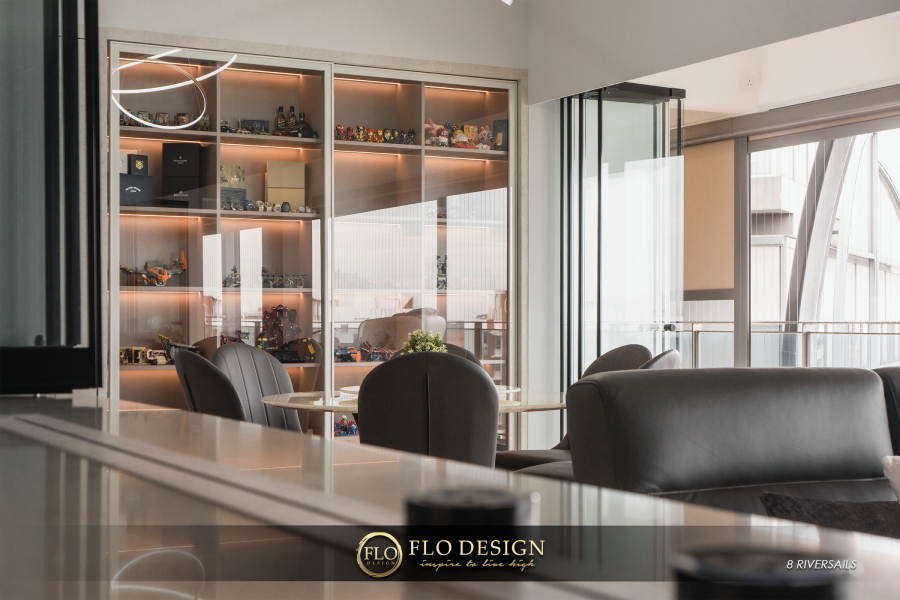
In the contemporary landscape of work culture, the design of office spaces has evolved significantly. Traditional cubicles and sterile environments are being replaced with dynamic, multisensory office designs that prioritise employee well-being, creativity, and productivity.
In this article, we will delve into the fundamentals and advantages of multisensory office design, highlighting its pivotal role in fostering a conducive work environment.
What Is Multisensory Office Design?
Multisensory office design is a holistic approach that engages multiple senses—sight, sound, touch, smell, and taste—to create an immersive and stimulating workspace. It encompasses various elements, including layout, lighting, colour schemes, furniture, textures, aromas, and ambient sounds, all carefully curated to enhance employee experience and performance.
Sight: Lighting and Visual Stimulation
Proper lighting is essential for creating a comfortable and energising work environment.
Natural light is highly prized for its positive effects on mood and productivity. Hence, we encourage the incorporation of large windows, skylights, or strategically positioned light fixtures, which can maximise natural light exposure while reducing reliance on artificial lighting sources.
Furthermore, dynamic lighting systems that mimic natural daylight cycles can regulate circadian rhythms, enhancing alertness and overall well-being among employees.
Sight: Color Psychology and Mood Enhancement
Interior design elements like colour psychology influence an individual's mood.
Multisensory office design utilises colour schemes strategically to evoke specific emotions and stimulate cognitive functions. For instance, shades of blue are associated with tranquillity and concentration, making them ideal for areas where the focus is paramount, such as meeting rooms or workstations. On the other hand, vibrant hues like yellow and orange can promote creativity and boost morale in collaborative spaces.
Touch: Furniture and Ergonomic Comfort
Ergonomic furniture is essential for promoting employee health and productivity. Adjustable desks and chairs support proper posture and reduce the risk of musculoskeletal disorders.
Touch: Texture and Tactile Stimulation
Introducing diverse textures into the office environment can engage the sense of touch and create sensory richness. Soft fabrics, natural materials like wood or stone, and tactile surfaces invite exploration and contribute to a sense of comfort and familiarity.
Incorporating elements of tactility into workspace design can also enhance cognitive processing and creativity, as tactile stimulation has been shown to activate areas of the brain associated with problem-solving and innovation.
Smell: Aroma and Olfactory Stimulation
Scents have a powerful influence on mood, memory, and cognitive function.
Aromatherapy can be incorporated into office spaces to create a pleasant and inviting atmosphere. Fragrances like lavender and citrus are known for their calming and energising properties, respectively, while subtle aromas of coffee or green tea can promote focus and mental clarity.
Smell: Soundscapes and Acoustic Comfort
Noise pollution in the workplace can be detrimental to concentration and productivity.
Multisensory office design addresses acoustic comfort by incorporating sound-absorbing materials, such as acoustic panels or ceiling baffles, to minimise reverberation and control noise levels. Additionally, providing options for personalised soundscapes, such as ambient music or white noise, can help mask distractions and create a more conducive work environment.
Taste: Stock Up Pantry and Cafeteria
While taste is not the most obvious sense to target, it helps to provide healthy meals, snacks, and refreshments at the pantry or cafeteria. This can help promote a sense of well-being, thus improving productivity and focus.
Benefits of Multisensory Office Design
Implementing multisensory office design yields numerous benefits for both employees and organisations. Firstly, creating a more engaging and comfortable workspace enhances employee satisfaction and well-being. Employees are more likely to feel valued and motivated when their physical environment supports their needs and preferences.
Secondly, multisensory office design fosters creativity and innovation by stimulating multiple senses and encouraging cognitive flexibility. A dynamic and inspiring work environment can spark new ideas and facilitate problem-solving, leading to greater innovation and competitive advantage for organizations.
Thirdly, improved employee well-being and productivity translate into tangible business outcomes, such as higher employee retention rates, reduced absenteeism, and increased job satisfaction. Organizations that invest in creating multisensory office environments demonstrate their commitment to employee welfare and are more likely to attract top talent in today's competitive labour market.

Conclusion
Multisensory office design represents a paradigm shift in workplace architecture, emphasising the importance of engaging all senses to create environments that foster employee well-being, creativity, and productivity. By incorporating elements such as layout optimisation, lighting design, colour psychology, ergonomic furniture, tactile stimulation, aromatherapy, and acoustic comfort, organisations can create workplaces that inspire and empower their workforce, driving success and innovation in the digital age. As we continue to navigate the evolving landscape of work culture, embracing the principles of multisensory office design will be instrumental in shaping the future of work and redefining the boundaries of what constitutes an optimal workspace.
If you’re interested in engaging interior design services in Singapore, reach out to us at Flo Design. As our team of experts is experienced in projects of all kinds, from condo to BTO interior design, we can definitely help transform your living space into your dream home.




